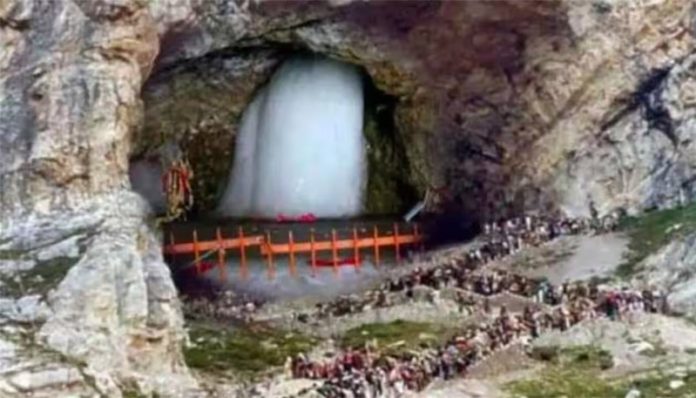Safer location identified near cave shrine for infra creation
*Operation of battery cars in some locations suggested
Mohinder Verma
JAMMU, Oct 25: To make the arduous Shri Amarnathji Yatra easier for the pilgrims, Geological Survey of India (GSI) has recommended ropeways and a tunnel on Pahalgam as well as Baltal routes. Moreover, it has identified safer location near the cave shrine for creation of infrastructure during the period of pilgrimage.
Reliable sources told EXCELSIOR that Jammu & Kashmir and Ladakh Unit of the Geological Survey of India has recently submitted some reports to the Government of J&K which are based on the detailed studies conducted in landslide prone areas.
Apart from identifying the low, medium and high landslide prone areas, the GSI has made a number of recommendations to the Government, which are now being taken into consideration while executing the developmental projects thereby immensely helping the administration. The recommendations pertain to Jammu-Srinagar National Highway, Mughal Road and both the routes of Shri Amarnathji Yatra etc.
As far as Shri Amarnathji Yatra routes are concerned, the GSI has identified several spots where technological interventions are required in order to make the pilgrimage easier and avoid disruptions due to vagaries of the weather.
Keeping in view devastating flash floods near cave shrine last year, the Geological Survey of India has cautioned the Shrine Board against establishing any sort of infrastructure along the rivulet in future, sources said while disclosing that GSI has identified suitable site in the same vicinity where temporary as well as permanent infrastructure can be created without any fear of flash floods.
“During next year’s Amarnath Yatra it is likely that Shrine Board would prefer this site for creation of all sorts of infrastructure as this is the flat plateau with hard rock”, sources said.
As far as Pahalgam route of pilgrimage is concerned, the GSI has suggested passenger ropeway between Chandanwari and Pissu Top for the convenience of the pilgrims. This section is considered as difficult because Pissu Top is situated at a height of 11500 feet above sea level and is at a steep elevation from Chandanwari.
Moreover, the Geological Survey of India has recommended tunnel between Mahaganesh Top and Poshpathri on Pahalgam-Amarnath route and operation of battery-operated cars or carts in Ganeshtop area, sources informed.
About Baltal route of pilgrimage, the GSI has recommended ropeways between Brarinarh and Sangam and other such locations where rock stabilization treatment is not possible because of varied reasons, sources further informed, adding “if these recommendations are considered by the Government the pilgrimage will become smooth as majority of the problematic areas would get bypassed”.
As far as Jammu-Srinagar National Highway is concerned, whole alignment has been changed between Marogh and Banihal as part of landslide management plan recommended by the Geological Survey of India.
“The GSI not only identifies the vulnerable areas but also suggests remedial measures in the form of landslide management plans for the convenience of the administration”, sources said while disclosing that in respect of Mughal Road, the GSI has recommended tunnel between Poshiana and Dubjan to avoid landslide prone areas.
Disclosing that Geological Survey of India’s findings are highly beneficial for the hilly Union Territory of Jammu and Kashmir, sources said that the agency is planning to conduct landslide vulnerability study of Kishtwar to Sinthantop and Bani-Bhaderwah roads during next year subject to the availability of resources and manpower.
It is pertinent to mention here that making Shri Amarnathji Yatra smooth for the pilgrims is the top priority of the Government of India as well as Government of Union Territory of Jammu and Kashmir and Detailed Project Report (DPR) for construction of Chandanwari-Panchtarni-Sangam Top-Baltal road is in advanced stage.
The project to be constructed by National Highways and Infrastructure Development Corporation Limited (NHIDCL) is likely to be approved and work started during current financial year.


